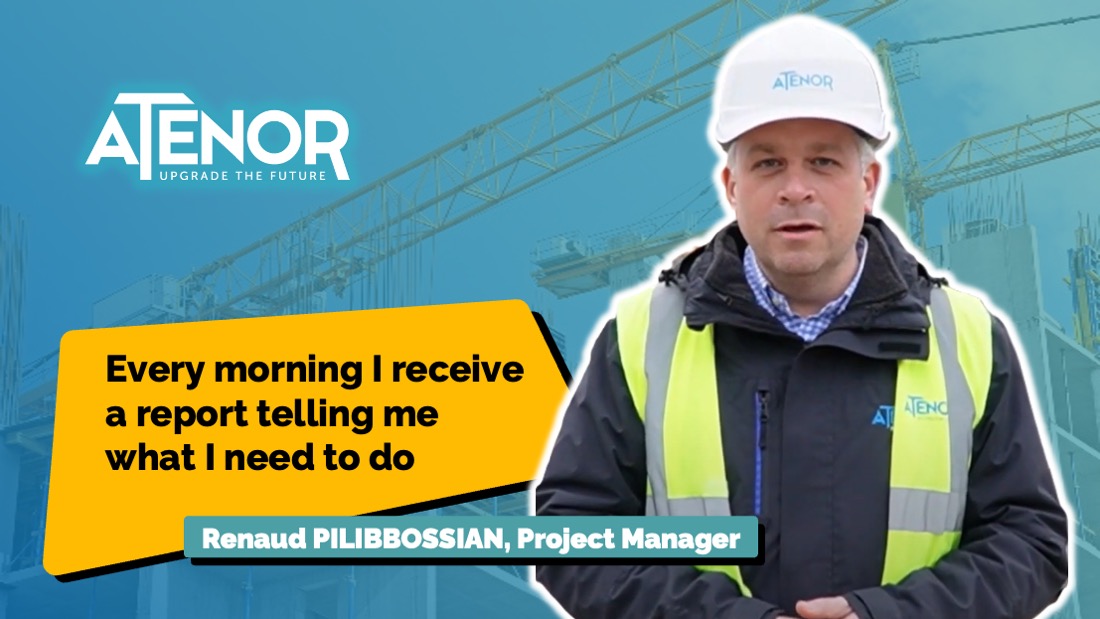Introduction
What happens to the As-Built Documentation after provisional acceptance?
.png)
What exactly are we talking about when we refer to As-Built Documentation?
If you are a construction professional, you’ve seen it over and over in various forms: the infamous As-Built Documentation, also known as DOE or As-Built File. Let's take a few lines to define what As-Built Documentation entails.
The As-Built Documentation is a comprehensive set of approved documents that capture the final state of a construction project.
It includes:
- Execution plans consistent with the completed work;
- Technical data sheets;
- Operational manuals;
- Maintenance instructions;
- Compliance certificates;
- Technical opinions and ATEX (Experimental Technical Assessment);
- Test results (measurements);
- Maintenance and service manuals and instructions;
- Setting parameters;
- Photos of sensitive areas.
Unfortunately, the As-Built Documentation is often the least favorite part of the construction site. The project owner sometimes has to chase the general contractor or various subcontractors to obtain it. Once in possession, it is regularly underutilized. Moreover, it is frequently incomplete or cumbersome, with important information buried among manually annotated scanned technical sheets.
Who hasn't had to endure reading a 200-page As-built Documentation with technical sheets in JPEG format, a crookedly scanned header page, and no decent search capability? Because the sad reality is that the As-built documentation is frequently linear and rigid. This approach has its limits, unlike the use of data.
Yet, beyond its legal (1) and mandatory aspect, the As-Built Documentation is an essential deliverable of the site, representing a "snapshot" of the final situation. It is the As-Built Documentation that marks the beginning of the building's life post-construction.
The varying expectations surrounding an As-Built Documentation
Three main actors revolve around the As-Built Documentation: the sponsors, the creators, and the end-users. Although it can happen that the same person occupies several of these roles, especially in smaller projects, this is rather rare. And here lies the problem! Each of these actors has specific expectations and needs regarding the As-Built Documentation.
The sponsors
This category encompasses project owners, master builders, subsidiary authorities, clients, and / or project managers. Their main objective is to ensure that the As-Built Documentation is:
- existing (that’s already something);
- complete (even better);
- compliant with legal requirements. All this while spending the minimum amount of time on verification and correction. And especially once the provisional acceptance / OPR is enacted, they move on to another project and want to hear no more about this damned file.
The creators
This group includes construction companies, subcontractors, suppliers, and our Safety and Health Coordinator (CSS for Belgium / CSPS for France) for the Later Work File. They see the establishment of the As-Built Documentation (DIU / DIUO) as an additional administrative task (and they already have enough of those!). Their motivation to produce it exhaustively can therefore be limited. What matters to them is to have technical documentation:
- quickly developed;
- at lower cost;
- that satisfies the client (who is not necessarily the end-user, let's remember!).
The end-users
The final users of the As-Built Documentation are the people who will interact with the building once the project is completed. This can include owners, occupants, maintenance teams, and commercial teams in the context of a lease or sale… Their main expectation is that the As-Built Documentation:
- be autonomously usable;
- be easily accessible;
- be clear and organized;
- provide essential data at the right time.
Field example: a person is not going to hunt for information when they need to manage a technical intervention. If they cannot find the information immediately, they will contact the project owner without necessarily getting a response, then improvise with potentially haphazard results.
And all three together, what does that give us?
Reconciling these divergent expectations can be challenging because the three stakeholders do not have the same skills or priorities. This underscores the importance of effective communication, a smooth workflow, and proactive management of the As-Built Documentation throughout the project.
The life of As-Built Documentation after provisional acceptance
In reality, the As-Built Documentation is often relegated to two unenviable fates: it can gather dust in an archive cellar if it is in physical format, or get lost in the meanders of servers in PDF format.
This is a real missed opportunity. As-Built Documentation, although mandatory from a legal standpoint, should be much more than just a simple administrative formality. It represents a treasure trove of valuable information for the future management of the building.
The As-Built Documentation, a tool for maintenance, the great overlooked
An As-Built Documentation offers a complete overview of the entire building, on every component, installation, and system. It should be the foundation for the maintenance manager to develop their preventive maintenance plan, thus helping to extend the life of the equipment and reduce the risks of unexpected breakdowns.
The lack of clear documentation on heating or ventilation parameters leads to makeshift adjustments in terms of regulation. This affects the building's energy efficiency, the comfort of its occupants, and results in additional costs (repairs, back-and-forth following complaints, overconsumption).
In the context of corrective maintenance, the As-Built Documentation is a savior, regardless of the urgency level.
Field example: The water leak. Well-organized and easily accessible As-Built Documentation allows technical teams to locate the concerned equipment, access the relevant plans, and make informed decisions to quickly resolve the issue.
A foundation for the Subsequent Intervention File
During renovation, redevelopment, or demolition, the As-Built Documentation serves as a valuable source of information for contractors and architects. It enables them to understand the structure and characteristics of the existing building, thus facilitating the planning and execution of the work.
A communication tool
The As-Built Documentation can also serve as a basis for communication with operators, occupants, and users of the building. They need information about the equipment, maintenance procedures, and safety instructions. But it can even address health issues (even on sensitive topics like asbestos!). It involves the occupants in the quality and reliability of the building.
A Selling Point
In addition to its operational advantages, a well-constructed As-Built Documentation can also facilitate the future sale of the building. By providing potential buyers with complete and reliable information, it can help strengthen trust and facilitate the real estate transaction.
Everyone wants it!
Yes, everyone wants your As-Built Documentation, even the firefighter (and why not the mail carrier 😉).
The As-Built Documentation is not just a mere administrative formality, but indeed an essential tool for the operational and maintenance phase of the building. A good As-Built Documentation means:
- Easing the work of teams;
- Improving the comfort of occupants;
- Ensuring the longevity of the installations.
How to obtain a quality As-built Documentation?
Whatever your role in the building process, we encourage you to give importance and meaning to the As-Built Documentation. Rethink its design. Here are some concrete strategies to ensure you obtain an innovative, high-quality As-Built Documentation that meets the needs of the execution/maintenance phase.
Rethink the constitution of the As-Built Documentation
Think of the As-Built Documentation as a resource for end-users. This approach allows you to design its content and structure based on actual needs. Collective memory does not exist. The operator is not the builder. The resident is not the operator.
Involve stakeholders from the beginning
The words “involve” or “consult” can be frightening if one imagines lengthy consultation processes or chaotic meetings where everyone declares their opinion. It is entirely possible to involve stakeholders while remaining efficient.
Sponsors, creators, and end-users all have different expectations and skills. Involving everyone from the start of the project is simply about agreeing on what is expected at the end.
And this can be done within a framework and responsibilities:
- For the Sponsors
- Allocate a budget for the creation of the As-Built Documentation with a separate line in the metric/cost schedule (not just For Memory!);
- Include detailed requirements in the Special Specifications Book – in the technical clauses and not lost amidst the administrative clauses;
- Make the As-Built Documentation mandatory from the provisional acceptance. This can even be a reason to refuse provisional acceptance if the documentation does not meet expectations.
- For the Creators
- Adopt an approach focused on the future utility of the documentation;
- Design the content and structure of the documentation based on the needs expressed by the end-users;
- Create the As-Built Documentation bit by bit (this makes the task less burdensome…);
- Integrate the As-Built Documentation and training as an inseparable whole.
- For the End-Users
- State their needs from the beginning (it’s easy to complain later if nothing was done initially);
- Provide advice on the form and content of the documentation;
- Train the teams;
- Distribute information in a targeted manner (no one wants to read an entire document: dissect to ensure that everyone feels involved).
Start drafting the As-Built Documentation from the first day of the construction site
A general contractor states that it takes an average of 2 to 3 months to collect the data for the As-Built Documentation. Therefore, starting this work at provisional acceptance is a horrible plan: a new construction site has already begun, and you are still stuck with this darn folder! Taking on this As-built Documentation from the first minutes of the execution phase means adopting a healthy and regular workload distribution.
Ensure uniformity for better consistency and simpler reading
In numerous instances, As-built Documentations suffer from a lack of uniformity. Different layouts or data structures from one document to another lead to difficulties in finding important information during the construction and even more so afterward.
Moreover, the nomenclature used on each project is often different and random, making the search for specific information even more difficult. For example, without consistent codification, it is impossible to quickly find the technical sheet for a faucet. You end up rummaging through several PDFs called “Sanitary 1”, “Sanitary 2”, etc. — Hello, anxiety!
Five tips for a As-built Documentation with consistent formatting:
- Have identical headers for technical sheets;
- Adopt a uniform nomenclature (a lexicon is a must);
- Create a logical and reliable document numbering;
- Eliminate duplicates by adopting automated numbering;
- Use a simple, effective, and logical codification.
By adopting a systematic and uniform approach in the creation and organization of As-built Documentations, you ensure better consistency and easier reading for all users.
💡 Check out our ebook on technical documentation :
To learn more about how to construct the optimal As-Built Documentation and to learn how to reduce administrative burden and create an as-built file from the first day, download our free ebook on technical documentation.
How does Cooperlink simplify the creation of your As built?
Cooperlink is an active company in construction data management. The Cooperlink teams are aware of their users' concerns and offer them efficient solutions to support and facilitate the practice of their profession.
Cooperlink has developed a data-based document management solution. This data-driven approach enables the effective formation of a As-built Documentation that meets the needs of various stakeholders.
- Build the As-built Documentation gradually from the first day of the execution phase, effortlessly;
- Implement rapid validation by all stakeholders in parallel (no more technical sheets stuck on the desk of the stability engineer);
- Archive building data durably and avoid re-encoding;
- A dynamic data operating system (encoded only once!) to choose, at the close of the site, what to extract to generate targeted As-built Documentations (by building, zone, apartment, trade, etc.);
- The ability to rename the files of all documents at once to adapt to the existing nomenclatures at the client;
- All this without changing anyone's habits or complicating the processes.
- At the end of the construction, as all the data is already on the platform, the creation of the DOE is automated: you define the structure according to your criteria, and the Cooperlink solution compiles the data according to your structure.
Furthermore, our teams are currently developing a database system for built assets ("equipment") between the BIM ecosystem and the construction site with the possibility to add data. It will thus be possible to link our BIM-modeled door not only to the technical sheets of the door and its components but also to the closure plan or any other relevant data. It will also be possible to specify, for example, the codes for locks and keys, the references of access systems, the installation date, and the control report.
Always in the spirit: encode the data once, the rest (schedules, headers, tables of contents) is just setting parameters!
(1) In Belgium, the Subsequent Intervention File (D.I.U.) is mandatory - Royal Decree of 25/01/01 and 19/01/05, articles 34, 35, and 3.In France, the DOE is mandatory only in the context of public contracts (Article 40 of the CCAG).
What is your project?
Talk to an expert
Tell us more about your project and needs. Our experts will answer your questions within 24 hours.

Axel Palmaers
CEO Cooperlink

.png)









